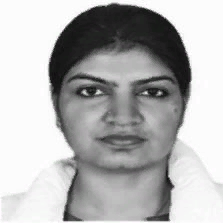International Journal of Image, Graphics and Signal Processing (IJIGSP)
IJIGSP Vol. 10, No. 7, 8 Jul. 2018
Cover page and Table of Contents: PDF (size: 958KB)
Frame Work for Expression Invariant Face Recognition System Using Warping Technique
Full Text (PDF, 958KB), PP.51-59
Views: 0 Downloads: 0
Author(s)
Index Terms
Expression Invariant face recognition, Warping, Shift Invariant Feature Transform
Abstract
Facial expressions, usually has an adverse effect on the performance of a face recognition system. In this investigation, expression invariant face recognition algorithm is presented that converts input face image with an arbitrary expression into its corresponding neutral facial image. In the present study, deep learning algorithm is used to train classifiers for reference key-points, where key-points are located and deep neural network is trained to make the system able to locate the landmarks in test image. Create an intermediate triangular mesh from the test and reference image and then warp it using affine transform and take the average of the normalized faces. To extract the features presented in the result image shift invariant feature extraction technique is used. Finally, results are compared and the recognition accuracy is determined for different expressions. The present work is tested on three different databases: JAFFE, Cohn-Kanade (CK) and Yale database. Experimental results show that the expression invariant face recognition method is very robust to variety of expressions and recognition accuracy is found to be 97.8 %, 96.8% and 95.7% for CK, JAFFE and Yale databases respectively.
Cite This Paper
Deepti Ahlawat, Vijay Nehra, Darshana Hooda, " Frame Work for Expression Invariant Face Recognition System Using Warping Technique ", International Journal of Image, Graphics and Signal Processing(IJIGSP), Vol.10, No.7, pp. 51-59, 2018. DOI: 10.5815/ijigsp.2018.07.06
Reference
[1]H. Drira,Ben Amor, B.,A.Srivastava,M. Daoudi, R.Slama, 3D Face Recognition under Expressions, Occlusions, and Pose Variations, IEEE Transactions in PatternAnalysis and Machine Intelligence, vol. 35, no. 9, pp. 2270-2283, 2013.
[2]Chintalapati, S., Raghunadh,M. V., Illumination, Expression and Occlusion Invariant Pose-Adaptive Face Recognition System for Real-Time Application, International Journal of Engineering Trends and Technology(IJETT), 2014.
[3]Chellappa R., Wilson C.L. , and Sirohey S., Human and machine recognition of faces: A survey, Proceedings of the IEEE, vo. 83, no. 5, pp. 705-740, 1995.
[4]Jafri R., Arabnia H. R., A Survey of Face Recognition Techniques, Journal of Information Processing Systems, vol. 5, no. 2, pp. 41-68, 2009.
[5]Phillips P. J., Moon H., Rauss P. J., and Rizvi S. A., The FERET Evaluation Methodology for Face Recognition Algorithms, IEEE Transactions on Pattern Analysis and Machine Intelligence, vol. 22, no. 10, pp. 1090-1104, 1995.
[6]Samal A. and Iyengar P.A., Automatic recognition and analysis of human faces and facial expressions: A survey, Pattern Recognition, vol. 25, no. 1, pp. 65-77, 1992.
[7]Zhao W., Chellappa R., Rosenfeld A., Phillips P.J., Face Recognition: A Literature Survey, ACM Computing Surveys, vol. 35, no. 5, pp. 399-458, 2003.
[8]A. M. Martinez, M.-H. Yang, and D. J. Kriegman, Special issue on face recognition, Computer Vision and Image Understanding: CVIU, vol. 91, pp. 1-5, 2003.
[9]M. Ramachandran, S.K. Zhou, D. Jhalani, and R. Chellappa, A Method for Converting a Smiling Face to A Neutral Face with Application to Face Recognition, Proc. ICAASSP Conf., vol. 2, pp. 977- 980, 2005.
[10]Y. Liu, K. L. Schmidt, J. F. Cohn, and S. Mitra, Facial asymmetry quantification for expression invariant human identification, Computer Vision and Image Understanding: CVIU, vol. 91, pp. 138-159, 2003.
[11]H.-S. Lee, and D. Kim, Expression-Invariant Face Recognition by Facial Expression Transformations, Pattern Recognition Letters, vol. 29, no. 13, pp. 1797-1805, 2008.
[12]P. Tasai, T.P. Tran, and L. Cao, Expression-Invariant Facial Identification, Proceedings of the 2009 IEEE International Conference on Systems, Man, and Cybernetics, pp. 5151-5155, 2009.
[13]C.-K. Hsieh, S.-H. Lai, and Y.-C. Chen, Expression-Invariant Face Recognition with Constrained Optical Flow Warping, IEEE Trans. on Multimedia, vol. 11, no. 4, pp. 600-610, 2009.
[14]C. Petpairote and S. Madarasmi, Face Recognition Improvement by Converting Expression Faces to Neutral Faces, ISCIT Conf., pp. 439 – 444, 2013.
[15]Turk M. and Pentland A., Eigen faces for recognition, Journal of Cognitive Neuroscience, vol. 3, no. 1, pp. 71-86, 1991.
[16]Lu J., Plataniotis K., and Venetsanopoulos A., Face recognition using LDA based algorithms, IEEE Transactions on Neural Networks, vol. 14, no. 1, pp. 195-200, 2003.
[17]Kumar C.Magesh, Thiyagarajan R., .Natarajan S.P, Arulselvi S., Sainarayanan G., Gabor features and LDA based Face Recognition with ANN classifier, Proceedings Of ICETECT, 2011.
[18]Ahonen T, Hadid A, Pietikainen M, Face Recognition with Local Binary Patterns, Proc. Eighth European Conf. Computer Vision, pp. 469-481, 2004.
[19]Varma Rahul, Sandesh Gupta, and Phalguni Gupta., Face recognition system invariant to expression, In International Conference on Intelligent Computing, Springer International Publishing, pp. 299-307, 2014.
[20]Lyons Michael J., Akamatsu Shigeru, Kamachi Miyuki and Gyoba Jiro, Coding Facial Expressions with Gabor Wavelets, IEEE International Conference on Automatic Face and Gesture Recognition, Nara Japan, IEEE Computer Society, pp. 200-205, 1998.
[21]Viola P., and Jones Michael J., Robust real-time face detection, International Journal of Computer Vision, vol. 57, no. 2, pp. 137-154, 2004.
[22]Yang, Ming-Hsuan, David J. Kriegman, and Narendra Ahuja, Detecting faces in images: A survey, IEEE Transactions on Pattern Analysis and Machine Intelligence, vol. 24, no. 1,pp. 34-58, 2002.
[23]Z. Zeng, M. Pantic, G. I. Roisman, T. S. Huang, A Survey of Affect Recognition Methods: Audio, Visual, and Spontaneous Expressions, IEEE Transactions on Pattern Analysis and Machine Intelligent, vo. 31, no. 1, 2009.
[24]Wiskott, L., et al, Face Recognition by Elastic Bunch Graph Matching, IEEE Transactions on Pattern Analysis and Machine Intelligence, vol. 19, no. 7, pp. 775-779, 1997.
[25]F. L. Bookstein, Principle Warps: Thin-Plate Splines and the decomposition of deformations, IEEE Trans. on Pattern Analysis and Machine Intelligence, vol. 11, no. 6, 1989.
[26]Lowe D., Distinctive image features from scale-invariant key-points, Int. Journal of Computer Vision, vol. 60, no. 2, pp.91-110, 2004.
[27]Hyvärinen Aapo and Oja Erkki, Independent Component Analysis: Algorithms and Applications, Neural Networks Research Centre Helsinki University of Technology P.O. Box 5400, Finland, Neural Networks, vol. 13, no. 4-5, pp. 411-430,2000.
[28]Pirlo G, Impedovo D, Cosine similarity for analysis and verification of static signatures, IET Biometric, vol. 2, no. 4, 151–158, 2013.
[29]Biswas A., Ghose M.K., Expression Invariant Face Recognition using DWT SIFT Features, International Journal of Computer Applications, vol. 92, no. 2 pp. 30-32, 2014.
[30]Li, X., Mori, G., Zhang, H., Expression-invariant face recognition with expression classification, In Proc. Third Canadian Conf. on Computer and Robot Vision, 77, 2006.
[31]Patil, H.Y., Kothari, A.G. and Bhurchandi, K.M, Expression invariant face recognition using semidecimated DWT, Patch-LDSMT, feature and score level fusion, Journal Applied Intelligence, vol. 44, no. 4, pp. 913-930, 2016.
[32]Patil, H.Y., Kothari, A.G. and Bhurchandi, K.M., Expression invariant face recognition using local binary patterns and contourlet transform, Optik-International Journal for Light and Electron Optics, vol. 127, no. 5, pp. 2670-2678, 2016.
[33]Hua-Chun, T., and Z. Yu-Jin, Expression-independent face recognition based on higher-order singular value decomposition, In The international conference on machine learning and cybernetics, pp. 12-15, 2008.
[34]Z. Riaz, C. Mayer, M. Wimmer, M. Beetz, and B. Radig, A Model Based Approach for Expressions Invariant Face Recognition, Department of Informatics, Technische Universitat München, pp. 289-298, 2009.
[35]Tsai P, Jan T, Expression-invariant face recognition system using subspace model analysis, In The IEEE international conference on systems, man and cybernetics, pp. 10–12, 2005.
[36]Hua-Chun T, Yu-Jin Z, Expression-independent face recognition based on higher-order singular value decomposition, In The international conference on machine learning and cybernetics, Kunming, China, 12–15 July 2008.
[37]Abusham EE, Ngo D, Teoh A, Fusion of locally linear embedding and principal component analysis for face recognition, In The pattern recognition and image analysis. 1 Jan. 2005.
[38]Kirtac K, Dolu O, Gokmen M, Face recognition by combining Gabor wavelets and nearest neighbor discriminant analysis:, In The 23rd international symposium on computer and information sciences, 2008.
[39]Abbas A, Khalil MI, Abdel-Hay S, Fahmy HM , Expression and illumination invariant preprocessing technique for face recognition, In International conference on computer engineering & systems, 2008.
[40]Lihong Z, Cheng Z, Xili Z, Ying S, Yushi Z, Face recognition based on image transformation, In The WRI global congress on intelligent systems, May 2009.
[41]http://vision.ucsd.edu/datasets/yale_face_dataset_original/yalefaces.zip
[42]http://www.consortium.ri.cmu.edu/ckagree/
[43]Murty G S, SasiKiran J.,Vijaya Kumar V, Facial expression recognition based on features derived from the distinct LBP and GLCM, International Journal of Image, Graphics And Signal Processing (IJIGSP), vol.2, no.1, pp. 68-77,2014.
[44]Juneja K, Rana C.," Multi Featured Fuzzy based Block Weight Assignment and Block Frequency Map Model for Transformation Invariant Facial Recognition", International Journal of Image, Graphics and Signal Processing(IJIGSP), vol.10, no.3, pp. 1-8, 2018

